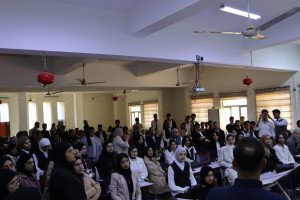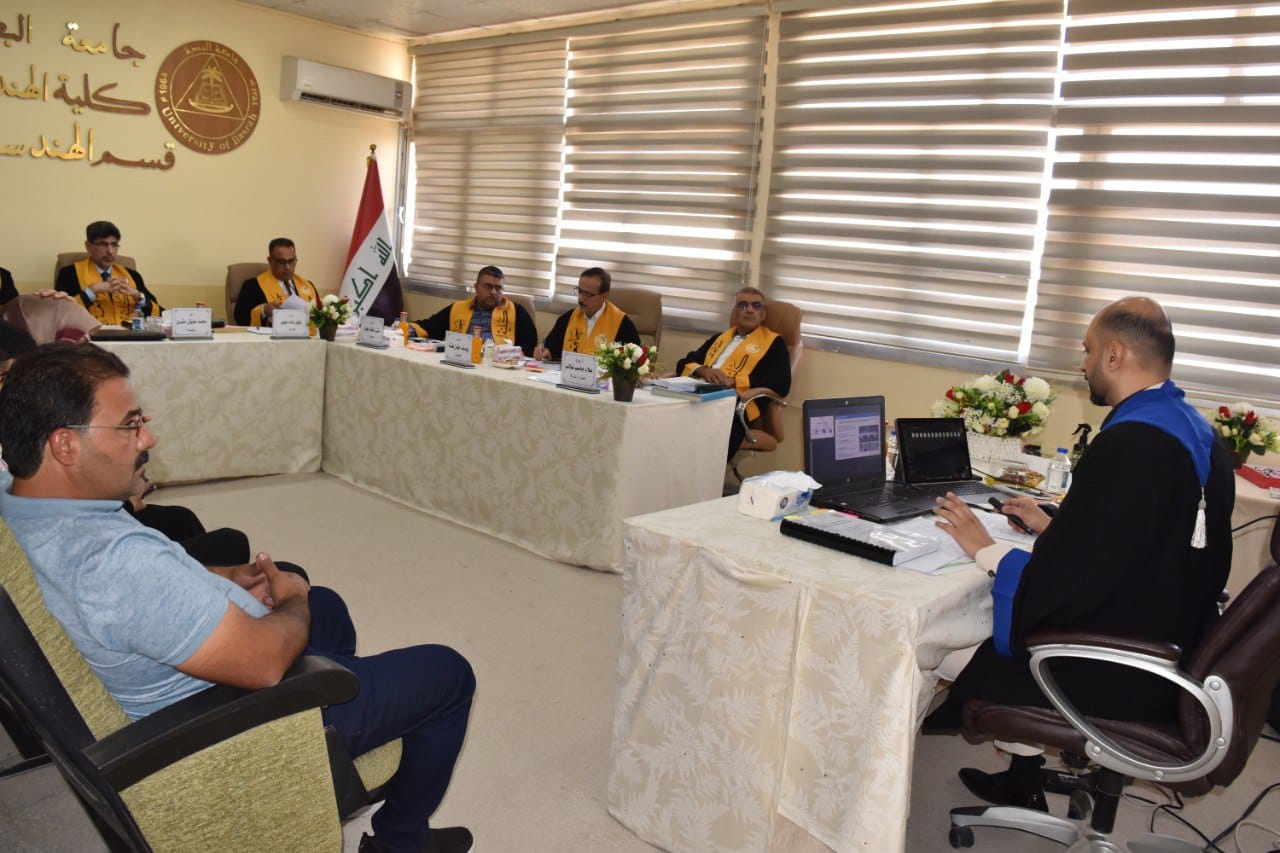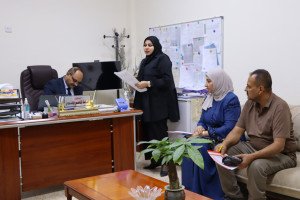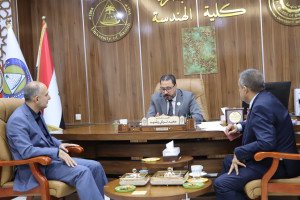
Researcher Yahya Mohammed Yahya's doctoral thesis, titled "Structural Behavior of Fiber Reinforced Light Weight Concrete Ribbed Slabs" was discussed at the College of Engineering, Department of Civil Engineering, University of Basra.
This study aimed to evaluate the structural behavior of ribbed one-way concrete slabs cast from lightweight steel fiber-reinforced concrete (SFRC) under constant and repeated loads. The aim was to achieve highly efficient structural alternatives that reduce the self-weight of structures and improve crack- and vibration-resistant performance. To achieve this, expanded clay aggregate (LECA) was used as a complete replacement for conventional coarse aggregate, along with varying steel-fiber volume fractions of 0%, 0.5%, 1%, and 1.5%.
The study also tested various slab geometries, including the number and spacing of ribs, and the diameters of the main reinforcement. This was compared to conventional concrete (NWC). The experimental program included the casting and testing of (19) laboratory models designed to this study investigates the impact of key variables such as concrete type, steel fiber ratio, number and spacing of ribs, loading type, and reinforcement.
The tests included determining flexural strength, compressive strength, splitting tensile strength and dry density, as well as monitoring load-displacement behavior, cracking patterns, and failure patterns under static loading and repeated cyclic loads simulating service conditions. Numerical analysis was also conducted using ABAQUS software to compare and verify the experimental results and complete the study of the factors affecting the structural performance of the panels. The results showed that replacing natural coarse aggregate with LECA reduced the dry density by approximately 25.6% while maintaining compressive strength close to that of regular concrete, contributing to reducing the dead loads of the structures. The experiments also showed that adding 1% steel fibers improved the compressive strength by 15.9% and the splitting tensile strength by 39.1%, increased the modulus of rupture by approximately 95%, and reduced the modulus of brittleness by approximately 17%, reflecting a clear improvement in the ductile behavior of the concrete. Increasing the fiber content to 1.5% increased compressive strength by 23.6% and flexural strength by 120% compared to mixes without fibers, while reducing the modulus of brittleness by 23.2%. Ribbed panels reinforced with 1% steel fibers demonstrated an 18.4% higher maximum static load capacity than panels without fibers. Initial cracking load increased by up to 85% with an increase in fiber content to 1.5%, demonstrating the fibers' ability to delay cracking and improve concrete toughness. Reducing the spacing between the ribs from 300 mm to 200 mm also improved load distribution and reduced crack widths by approximately 21.6%. Meanwhile, the diameter of the reinforcing bars, from 8 mm to 12 mm, increased the maximum load capacity by approximately 97%, but at the expense of a 71% decrease in ductility due to the increased stiffness.Under repeated loads, the results demonstrated that the lightweight fiber-reinforced corrugated panels retained approximately 85% of their ultimate static strength, compared to 76% for solid panels. This confirms the corrugated system's ability to withstand cyclic loads as a result to the well-distributed stresses and reduced crack concentration. The study also showed that the use of lightweight corrugated panels reduces the self-weight by approximately 55% compared to 150 mm thick solid panels, while maintaining high load-bearing capacity and improving ductility indicators. This enhances performance, sustainability, and extends service life. In terms of numerical analysis, the finite element models (FEMs) demonstrated their high ability to simulate the actual behavior of the panels, with a difference of no more than ±12% from laboratory results. This confirms their reliability as an accurate engineering tool for studying the responses of these systems under various loading conditions. The models also showed that increasing the number of nerves to three improved stress distribution and reduced crack concentration, while the built-in interaction between concrete and reinforcement in ABAQUS contributed to achieving a high agreement between the load-displacement curves of the numerical models and the laboratory results.








